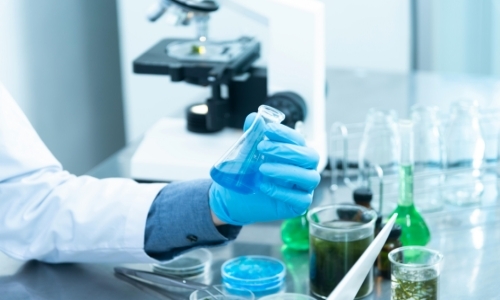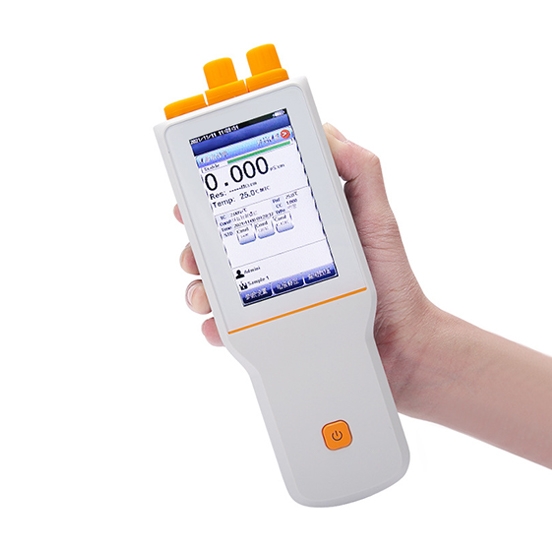A conductivity meter is a precision instrument used to measure the conductivity of a solution. Conductivity is an indicator of the ion concentration in a solution. It reflects the ability of a solution to conduct current. It is the most commonly used electrochemical analysis method after measuring pH and is also an important indicator for measuring water quality. The conductivity meter can provide continuous recording characteristics and has the ability to connect to an automatic electronic potentiometer for continuous recording. It is widely used in water quality monitoring, chemical analysis, environmental monitoring, scientific research, and other fields.

The working principle of the cond meter is based on the electrochemical measurement method. The core part of the conductivity tester is composed of a conductivity electrode and an electric meter (electronic unit). The electric meter is responsible for amplifying and processing the signal and converting it into a conductivity reading. In an electrolyte solution, charged ions move under the influence of an electric field and transfer electrons, so they have a conductive effect. The strength of its conductivity is called conductivity. Because conductivity is the reciprocal of resistance, the method of measuring conductivity can be used to insert two electrodes into the solution to measure the resistance between the two electrodes.
The error sources of the conductivity meter mainly include factors such as electrode quality, temperature, solution concentration, instrument calibration, and improper operation. For example, improper selection or poor quality of electrode materials may lead to conductivity detection errors; temperature changes will affect the degree of thermal motion of ions in the solution, thereby affecting the conductivity value; the concentration of the solution will also affect the conductivity value. In addition, uncalibrated or inaccurate calibration of the instrument, improper operation or incorrect steps, and changes in environmental factors (such as temperature and humidity) may cause errors in the measurement results. Therefore, measurements should be made strictly in accordance with the operating procedures. At the same time, the conductivity indicator should be calibrated and maintained regularly, and attention should be paid to the control of experimental environmental conditions to ensure the accuracy and reliability of the measurement results.
Correct Use and Operation

The conductivity monitor is an instrument used to measure the conductivity of water, which is widely used in industrial production, municipal water supply, environmental monitoring, and other fields. The SISCO online store will introduce you to the use steps and detection process of the conductivity monitor in detail, helping you to easily master the operation and measurement methods of the conductivity monitor. If you need to purchase your favorite product, you can also click to buy.
- Before using the conductivity monitor, check whether the appearance of the conductivity monitor is intact and whether all parts are tightened; prepare an electrode, and the length of the electrode should be adjusted according to the volume of the water sample to be measured; if necessary, a standard solution should be prepared for calibrating the conductivity monitor.
- Plug the power cord of the conductivity monitor into the power socket, and then connect the electrode to the connector of the conductivity monitor. Note that when connecting, make sure that the polarity of the electrode is correct.
- Put the prepared standard solution into the sample slot of the conductivity monitor, and then perform the calibration operation according to the manual of the conductivity monitor. Usually, you only need to run the calibration program to complete the calibration.
Start measurement
After the calibration is completed, you can start measuring the conductivity of the water sample. Immerse the electrode in the water to be tested, wait for a while, and read the value on the conductivity monitor. Note that during the measurement, keep the contact between the electrode and the water sample stable.
Daily Maintenance
In order to ensure the accuracy and stability of the conductivity meter, and as an instrument for accurately measuring the conductivity of the solution, the conductivity measurement instrument has strict requirements for daily use and maintenance.
Clean the Conductivity Meter
The conductivity instrument will come into contact with various samples during use, and the sample residue may adhere to the electrode or the surface of the instrument, affecting the measurement results. Therefore, it is very important to clean the conductivity meter regularly. First, the electrode needs to be removed and rinsed with running tap water. If there are stubborn residues on the electrode, it can be cleaned with a diluted acid or alkali solution, but safety should be paid attention to during the cleaning process to avoid splashing on the skin or eyes. After cleaning the electrode, rinse the acid and alkali solution with pure water, and then wipe the surface of the electrode with a paper towel. At the same time, the outer casing of the instrument also needs to be cleaned with a damp cloth to ensure dust-free and avoid contaminating the sample.
Calibrate the Conductivity Meter
After the conduction meter has been used for a period of time, its measurement accuracy may decrease, so it needs to be calibrated regularly. The method of calibrating the conductivity meter is usually to use a standard solution for comparison. First, prepare two standard solutions of known concentration, one lower than the concentration of the liquid to be tested, and one higher than the concentration of the liquid to be tested. Then, according to the operating instructions of the instrument, immerse the conductivity meter in the low-concentration standard solution and wait for a while until the measured value stabilizes. Record the measured value at this time. Then, immerse the conductivity indicator in the high-concentration standard solution, wait for a while, and record the measured value at this time. Finally, according to the calibration method in the instrument manual, adjust the calibration parameters of the instrument so that the instrument reading matches the concentration of the standard solution.
Maintain the Electrode
The core component of the conductivity meter is the electrode, so it is very important to maintain the electrode. First of all, you need to pay attention to the use of the electrode to avoid damage to the electrode due to excessive or improper use. When storing the electrode, it should be placed in a protective box to avoid contamination or damage by external substances. Check the electrode regularly for wear or contamination, and replace it in time if necessary. In addition, when using the electrode, be careful to avoid too high or too low temperature, acidic or alkaline environment, and too high concentration solution, all of which may affect the stability and life of the electrode. Finally, according to the instructions of the electrode, calibrate and repair the electrode regularly to ensure its measurement accuracy.
In short, the maintenance of the cond meter is the premise to ensure its normal operation and accurate measurement, including three key points: cleaning the instrument, calibrating the instrument, and maintaining the electrode. Taking correct maintenance measures will extend the service life of the conductivity meter and obtain accurate and reliable measurement results.

